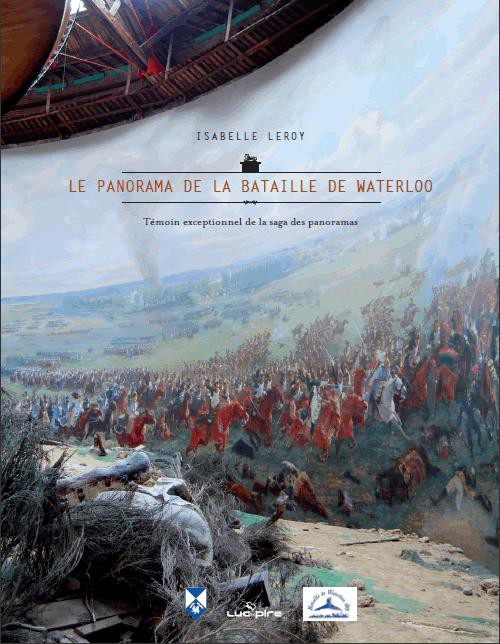Since its installation in 1912 at the foot of the Butte du Lion, Louis Dumoulin's panorama has been essential viewing for visitors wishing to discover the site of the famous battle of 18 June, 1815, and commemorate the events that took place on that day. In July 2008, this particularly impressive example of the panorama phenomenon was added to the “Liste indicative de la Belgique”, an essential stage in becoming a World Heritage Site.
At a time when multimedia productions and 3D special effects dominate the media world, the majority of visitors to the Waterloo battlefield are unaware of the existence of this rare monumental painting, one of the best preserved of its kind in the world, and even less so of its importance as a medium in both art history and modern communications. This publication's aims are three-fold: firstly present the panorama in its historical context, as part of the Waterloo battle site in general; secondly explain the history of the panorama phenomenon, a medium which at one point received hundreds of thousands of visitors before cinema became widespread; and thirdly, offer an overall assessment (based on over twenty years of research) of panorama production in Belgium, a country once known as “the nation of panoramas”.
Isabelle Leroy is an art history graduate from the Université libre de Bruxelles. In 1988, her dissertation covered the history of panorama painting in Belgium, and she has written a number of articles on the theme. She has also worked as Belgian correspondent for an exhibition on Sehsucht panoramas which took place in Bonn in 1993.
Napoleon.org's opinion: a great success, this book combines rich iconography with informative and fascinating explanations. The panorama art-form, almost forgotten today with the advances in cinema and digital image, played a hugely important role during the 19th century. Originally known as “nature à coup d'oeil”, a practice begun around 1787, the panorama normally depicted a nature or historical scene painted using the “trompe l'oeil” technique. This painting would be installed in a circular room, at the centre of which would stand the visitor, allowing for a full 360° view of the scene. In this way, the visitor could really 'experience' the scene and be transported to a particular place or time in history.
The panorama by Dumoulin concerns the events that took place at around 6pm on the day of the battle, including the heroic charges and the moment when La Haye-Sainte was about to fall to the French. Housed in its original room, the panorama has been maintained as it would have been in 1912, complete with elements that contribute to the overall scene (soldiers, horses, sand, wood debris…).
(I. Delage, tr. H.D.W.)
Le Panorama de la Bataille de Waterloo (in French)
Author(s) : LEROY Isabelle

- Year of publication :
- 2009
- Place and publisher :
- Liège (Belgium), CRMSF/ASBL "Waterloo 1815"/Editions Luc Pire
- Number of pages :
- 96

